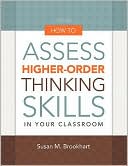Category Books
- Fiction Books & Literature
- Graphic Novels
- Horror
- Mystery & Crime
- Poetry
- Romance Books
- Science Fiction & Fantasy
- Thrillers
- Westerns
- Ages 0-2
- Ages 3-5
- Ages 6-8
- Ages 9-12
- Teens
- Children's Books
- African Americans
- Antiques & Collectibles
- Art, Architecture & Photography
- Bibles & Bible Studies
- Biography
- Business Books
- Christianity
- Computer Books & Technology Books
- Cookbooks, Food & Wine
- Crafts & Hobbies Books
- Education & Teaching
- Engineering
- Entertainment
- Foreign Languages
- Game Books
- Gay & Lesbian
- Health Books, Diet & Fitness Books
- History
- Home & Garden
- Humor Books
- Judaism & Judaica
- Law
- Medical Books
- New Age & Spirituality
- Nonfiction
- Parenting & Family
- Pets
- Philosophy
- Political Books & Current Events Books
- Psychology & Psychotherapy
- Reference
- Religion Books
- Science & Nature
- Self Improvement
- Sex & Relationships
- Social Sciences
- Sports & Adventure
- Study Guides & Test Prep
- Travel
- True Crime
- Weddings
- Women's Studies
How to Assess Higher-Order Thinking Skills in Your Classroom »

Authors: Susan M. Brookhart
ISBN-13: 9781416610489, ISBN-10: 1416610480
Format: Paperback
Publisher: Association for Supervision & Curriculum Devel
Date Published: September 2010
Edition: (Non-applicable)
Author Biography: Susan M. Brookhart
Book Synopsis
Educators know it's important to get students to engage in "higher-order thinking." But what does higher-order thinking actually look like? And how can K-12 classroom teachers assess it across the disciplines? Author, consultant, and former classroom teacher Susan M. Brookhart answers these questions and more in this straightforward, practical guide to assessment that can help teachers determine if students are actually displaying the kind of complex thinking that current content standards emphasize.
Brookhart begins by laying out principles for assessment in general and for assessment of higher-order thinking in particular. She then defines and describes aspects of higher-order thinking according to the categories established in leading taxonomies, giving specific guidance on how to assess students in the following areas:
Analysis, evaluation, and creation
Logic and reasoning
Judgment
Problem solving
Creativity and creative thinking
Examples drawn from the National Assessment of Educational Progress and from actual classroom teachers include multiple-choice items, constructed-response (essay) items, and performance assessment tasks. Readers will learn how to use formative assessment to improve student work and then use summative assessment for grading or scoring.
Aimed at elementary, middle, and high school teachers in all subject areas, How to Assess Higher-Order Thinking Skills in Your Classroom provides essential background, sound advice, and thoughtful insight into an area of increasing importance for the success of students in the classroom-and in life.
Table of Contents
Introduction 1
1 General Principles for Assessing Higher-Order Thinking 17
2 Assessing Analysis, Evaluation, and Creation 39
3 Assessing Logic and Reasoning 61
4 Assessing Judgment 84
5 Assessing Problem Solving 98
6 Assessing Creativity and Creative Thinking 124
Afterword 142
References 150
Index 153
About the Author 159
Subjects
 Educational Levels & Settings
Educational Levels & Settings  Elementary Education
Elementary EducationEducation & Teaching
 Educational Theory, Research & History
Educational Theory, Research & History  Psychology of Education
Psychology of EducationEducation & Teaching
 Elementary Education
Elementary Education  Critical thinking in children
Critical thinking in childrenNonfiction
 Psychology
Psychology  Psychology - Theory, History & Research
Psychology - Theory, History & ResearchPsychology & Psychotherapy
 Psychology - Theory, History & Research
Psychology - Theory, History & Research  Child & Infant Psychology & Psychiatry
Child & Infant Psychology & PsychiatryMedical Books
 Psychology & Psychotherapy
Psychology & Psychotherapy  Psychology - Theory, History & Research
Psychology - Theory, History & Research
